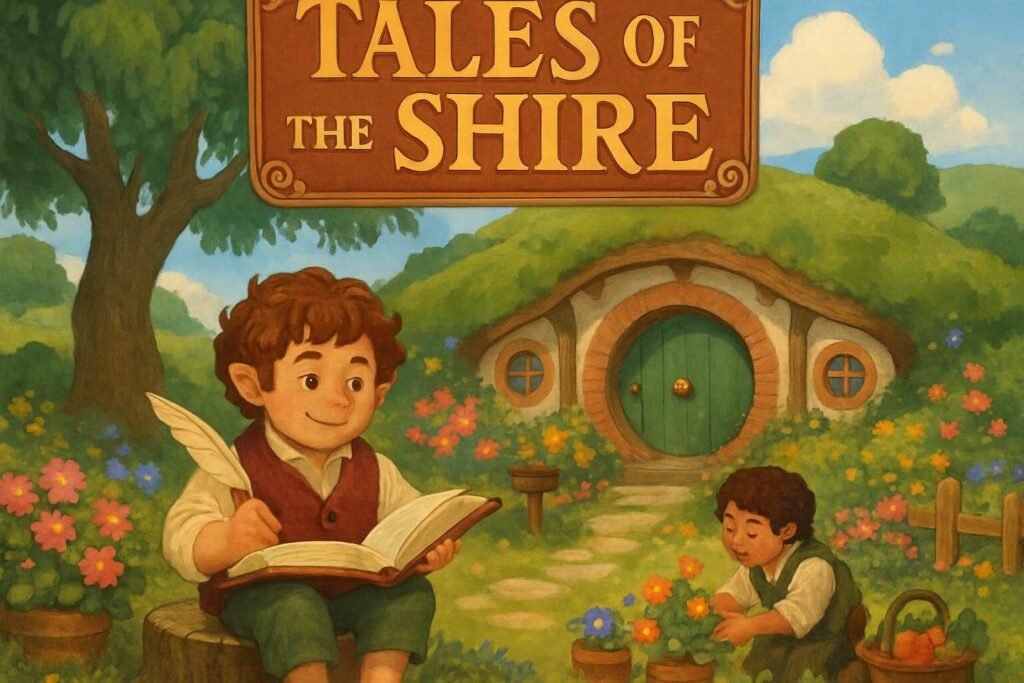
A Different Kind of Middle-earth
Tales of the Shire brings a fresh take on the world of hobbits. It doesn’t follow war or epic quests. Instead, it celebrates quiet life. You don’t swing a sword or chase orcs. You plant seeds, host dinners, and decorate your home. The game drops you in Bywater, a sleepy village in the heart of the Shire. From there, you shape your story.
Players step into the furry feet of a custom hobbit. You choose your look, outfit, and even the curl of your foot hair. The tone is peaceful from the start. Warm colors, gentle music, and soft lighting set the mood. This game is not about power. It’s about presence.
You arrive as a newcomer. Your goal? Help the village earn official recognition as a real Hobbiton township. But this isn’t done through politics or wealth. It’s done through friendship, food, and farming.
Home, Hearth, and Hobbit Style in Tales of the Shire
The game’s standout feature is its decorating system. Unlike many life sims, Tales of the Shire lets you place objects freely. No strict grids. You rotate, stack, and position things anywhere. That allows cluttered charm, like scattered books and mismatched mugs. It feels real and cozy, like Bag End after a party.
You also spend time gardening, fishing, and cooking. These tasks build connections with the townsfolk. Give someone a perfect mushroom pie, and they’ll open up to you. These interactions form the heart of the game.
The cooking minigame deserves praise. You chop, stir, and season food with a hands-on feel. Meals don’t just fill hunger bars. They tell stories and reflect culture. Serve the right dish at the right time, and it changes how characters see you. There’s no combat, but there is strategy—in the kitchen and in conversation.
A Slow Stroll Through Shire Tales
Tales of the Shire shines when you take your time. Wander through woods. Forage under trees. Talk to neighbors about their memories. Small tasks lead to bigger rewards, like special tools or new story paths. Some quests—called “Tales”—unfold over time. They involve things like growing rare herbs or planning a perfect picnic.
The setting stays small. You don’t travel far beyond Bywater. Some players may crave more exploration. Others may find comfort in the limits. It encourages depth over scale. You learn every corner of the village and every quirk of its people.
The game pays attention to lore. You spot nods to Tolkien’s world in book titles, heirlooms, and folk songs. It doesn’t shove references in your face. Instead, it layers them softly, like soil over roots.
The Promise and the Uneven Reality of Tales of the Shire
While the concept glows with promise, the execution shows cracks. Some players feel the characters look odd—caught between realism and animation. Others mention bugs or unclear tasks. Certain tutorials miss key details. You might wonder how to refill a watering can or where a tool vanished.
Some quests repeat. A few NPCs feel flat or undeveloped. Dialogue sometimes lacks depth. Still, the game carries a strong sense of care. The developers clearly love the world they built, even if not every part is polished.
Performance issues appear on certain platforms. Load times stretch longer than expected. Occasional stuttering disrupts the calm. Updates are promised, but players want smoother experiences from the start.
Still, fans of life sims may forgive the flaws. The game offers a space to breathe, to enjoy the slow joys of Hobbit life. It may not be perfect, but it offers something different—a world where kindness matters more than skill, and where your greatest task is making tea on time.
Final Thoughts
Tales of the Shire invites players to live small and live well. It swaps adventure for affection and trades danger for daily joy. While some technical hiccups dim its shine, the soul of the game remains strong. It’s not a story of dragons or darkness. It’s a quiet tale—told in gardens, gatherings, and good food. For those seeking peace in their play, it offers a warm seat by the fire.Tools



